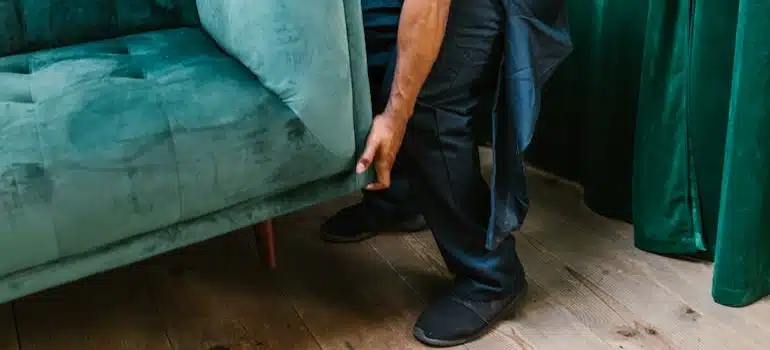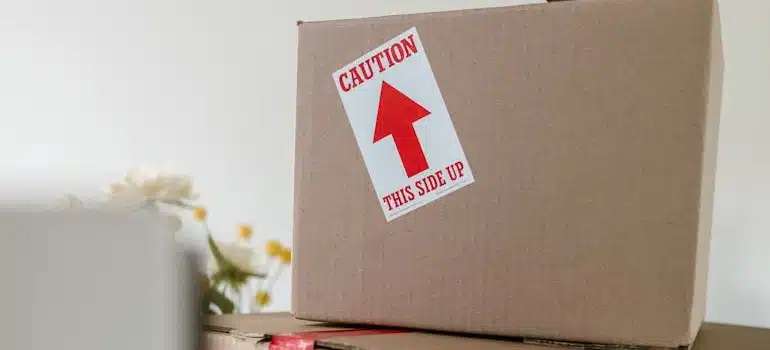Packing furniture for a cross-country move
Improper packing can lead to serious damage during a long move in Florida. Scratches, dents, and broken parts often happen during loading or unloading. Packing furniture for a cross-country move, the right way, means you reduce the chance of damage, lower your risk of insurance claims, and save time when unpacking. Taking extra care also makes the process less stressful! It gives you more control and makes it easier for your chosen movers and packers in Miami to handle your items safely. This guide walks you through every step.
Start with a moving plan: Inventory and item evaluation
Start by creating a clear list of every piece of furniture you’re moving. Write down each item, note its condition, and decide where it fits in your new home. This helps you stay organized and prepare better for packing.
Group your furniture into three categories: fragile, bulky, and valuable. Fragile pieces need padding. Bulky furniture may need to be disassembled. Valuable items may require extra protection or tracking. And as you’re planning ahead, now is a good time to ask what’s the average cost of moving interstate with the furniture you plan to bring.

Disassembling furniture: Step-by-step instructions
Some furniture is too large or awkward to move in one piece. Disassembling key items like bed frames, tables, desks, and sectionals makes them easier to protect and transport.
Follow these steps to take apart your items safely and efficiently:
- Identify items that need disassembly: Focus on large or heavy pieces like bed frames, dining tables, sectionals, desks, bookshelves, and entertainment units.
- Clear all surfaces and remove loose parts: Take off cushions, table leaves, glass panels, or removable shelves before starting.
- Take photos before you begin: Snap pictures of each item so you can easily reassemble them later.
- Use proper tools: Keep tools like screwdrivers, Allen keys, pliers, and a cordless drill nearby. Use a moving strap to stabilize furniture while working.
- Label and store small hardware: Place all screws, bolts, washers, and brackets in zip-top bags. Label each bag with the furniture name and tape it to the item or store it in a dedicated parts box.
- Wrap and group disassembled parts: Stack disassembled legs or panels together, then wrap them in furniture blankets or bubble wrap. Tape them securely to prevent shifting.
- Protect corners and edges: Use foam or cardboard corner guards on wooden or glass edges to prevent dents and chips during transport.
For those relocating out of South Florida, working with trusted interstate moving companies in Miami can simplify both planning, disassembly, and packing.
Protecting delicate and upholstered items
Delicate and upholstered furniture needs extra protection to withstand long-distance transport. Damage often happens from friction, moisture, or poor stacking.
Use the steps to wrap and protect each item properly:
- Start with a clean surface: Vacuum upholstered furniture and wipe down hard surfaces to remove dust and dirt that could cause scratches or mold.
- Wrap upholstery in fabric or blankets: Use cotton sheets or furniture blankets to cover sofas, chairs, and padded items. Avoid plastic wrap directly on fabric or leather, which can trap moisture.
- Secure with stretch wrap: After padding the item, use plastic stretch wrap to hold everything in place. Wrap tightly from bottom to top. Use tape only on the wrap, not on furniture surfaces.
- Cover wood and metal items with padding: Drape thick moving blankets over wooden tables, metal frames, or bookshelves. Add a layer of bubble wrap for corners, handles, or exposed joints.
- Use corner protectors: Place foam or cardboard protectors on the corners of desks, tables, and dressers. These prevent chips and cracking during handling or stacking.
- Enclose mattresses in protective covers: Slide each mattress into a plastic mattress bag. Seal it with packing tape, then layer a moving blanket on top for added cushioning.
- Label fragile or sensitive items clearly: Write “fragile” and “this side up” on both sides of wrapped pieces using a bold marker or moving labels.
These steps help you protect furniture during a long-distance move and reduce wear during transport or storage. Delicate items will arrive clean, dry, and undamaged!
Choosing proper packing materials
Using the right materials helps prevent damage and keeps your items safe during transport. Here are the supplies you should prepare:
- Bubble wrap for protecting fragile parts
- Moving blankets for covering wood and large surfaces
- Packing tape for sealing and securing wraps
- Heavy-duty boxes for smaller disassembled parts
- Shrink wrap for keeping everything in place
Low-quality materials can tear, shift, or come loose in transit. Choose supplies that offer durability and strong coverage.
In a city like Miami, where weather and home styles vary, choosing the right supplies matters. If you’re unsure what works best, compare professional packing services in Miami vs. DIY before starting your packing process.

Wrapping and securing techniques for different furniture types
Each type of furniture needs a slightly different wrapping approach. Start by identifying the material and shape of your item:
- For wood furniture, wrap it in a moving blanket and secure it with plastic wrap. Avoid letting tape touch the wood surface.
- For glass items, cover them in bubble wrap and add cardboard corners. Always label these as “fragile,” even if you’re moving them interstate in your car, and handle them carefully.
- If you’re packing leather furniture, wrap it in a cotton sheet or fabric layer before applying plastic wrap. This prevents sticking, sweat buildup, or cracking during transit.
Inside the truck, place heavier items at the bottom and avoid stacking anything directly on glass or upholstery. Use straps or tie-downs to hold everything in place.
Safe lifting, loading, and transportation tips
Packing furniture for a cross-country move properly won’t matter if your items aren’t handled with care during loading. You can prevent damage and injury by using the right lifting tools and techniques.
Start with the basics. Use a furniture dolly to move large items without dragging. Secure heavier pieces with moving straps to keep weight balanced. Use a loading ramp to safely push or pull items into the truck.
Pay attention to how weight is distributed. Place heavier furniture close to the truck floor and distribute weight from side to side. This keeps the load stable during turns or braking.
Hiring help vs. doing it yourself
You have two main options for packing your furniture: do it yourself or hire professionals. The choice depends on your time, physical ability, and how many items you need to move.
If you have just a few large items and some free time, packing everything on your own can save you money. You’ll be in control and can move at your own pace.
But if you’re dealing with heavy, antique, or valuable furniture, hiring a trained crew of antique movers may be a better option. Professional movers bring the right tools and materials. They know how to wrap, lift, and load quickly and safely. You also avoid last-minute surprises or injuries.

Final checklist before the moving truck leaves
Before the truck pulls away, take a final walk through your space. Use this checklist to make sure everything is protected and ready for travel.
- Make sure each item is fully wrapped
- Confirm that your home inventory list is accurate
- Attach hardware bags or place them in a labeled box
- Label large wrapped items as fragile or “this side up.”
Completing this step helps catch anything that you may have overlooked. It also gives your movers clear guidance when loading and unloading.
Protect your furniture with smart planning and clear expectations
Packing furniture for a cross-country move requires careful planning, quality materials, and attention to detail. From disassembling each piece to wrapping it correctly and loading it with care, every step helps prevent damage and delays.
If you decide to hire help, work with professionals who understand the value of your items and the demands of long-distance transport. But before hiring anyone, always review the packing assistance contract to know what to check before signing and what to expect.
To get started, request a free packing estimate or contact a trusted team with experience in interstate relocations. The right approach now can save you time, money, and stress later.
